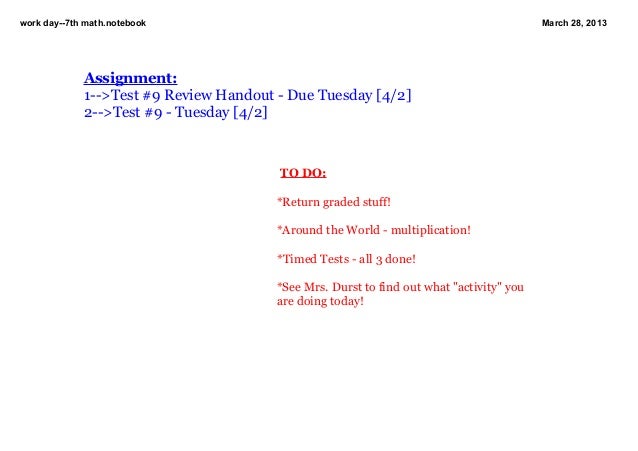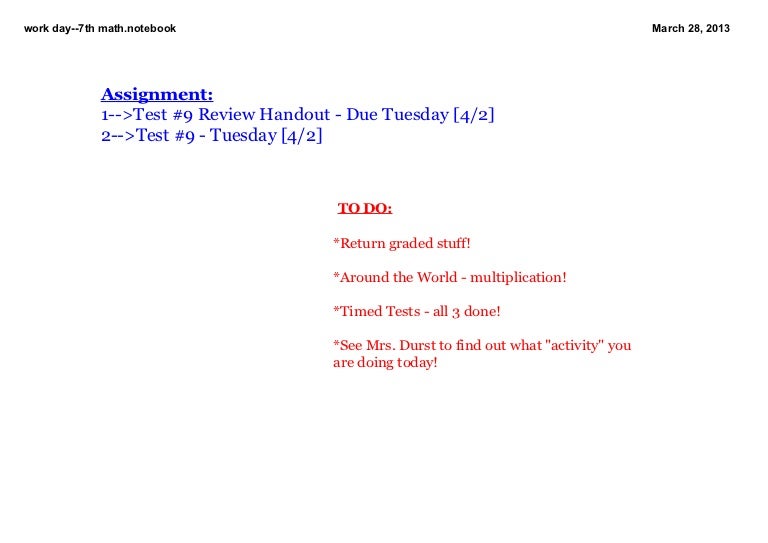- 7th Adv. Concept Listmrs. Colville's Math Classroom
- 7th Adv. Concept Listmrs. Colville's Math Class 9
- 7th Adv. Concept Listmrs. Colville's Math Class 1
Class 7 Maths - Get comprehensive material for Class 7 Maths Olympiad like IMO, IOM, ASSET Math and many more. You will find here best maths guide for Class 7. Math as a subject is complicated and needs a clear understanding of basic concepts and fundamentals. NCERT Maths solutions for Class 7 is an excellent way for you to build a strong fundamental foundation for further studies in higher grades. RD Sharma Solutions for Class 7 Maths Chapter 11 - Percentage. These solutions can help the students to understand the concepts covered in a better way. Click on the link to download free PDF.
NCERT Solutions for Class 7 Maths Chapter 7 Congruence of Triangles Ex 7.2
NCERT Solutions for Class 7 Maths Chapter 7 Congruence of Triangles Exercise 7.2
Ex 7.2 Class 7 Maths Question 1.
Which congruence criterion do you use in the following?
(a) Given:
AC = DF
AB = DE
BC = EF
So, ∆ABC = ∆DEF
(b) Given:
ZX = RP
RQ = ZY
∠PRQ = ∠XZY
So, ∆PQR ≅ ∆XYZ
(c) Given: ∠MLN = ∠FGH
∠NML = ∠GFH
ML = FG
So, ∆LMN = ∆GFH
(d) Given:
EB = DB
AE = BC
∠A = ∠C = 90°
∆ABE = ∆CDB
Solution:
(a) ∆ABC ≅ ∆DEF (BY SSS rule)
(b) ∆PQR ≅ ∆XYZ (BY SAS rule)
(c) ∆LMN ≅ ∆GFH (BY ASA rule)
(d) ∆ABE ≅ ∆CDB (BY RHS rule)
Ex 7.2 Class 7 Maths Question 2.
You want to show that ∆ART = ∆PEN,
(a) If you have to use SSS criterion, then you need to show
(i) AR =
(ii) RT =
(iii) AT =
(b) If it is given that ∠T = ∠N and you are to use SAS criterion, you need to have
(i) RT = and
(ii) PN =
(c) If it is given that AT = PN and you are to use ASA criterion, you need to have
(i) ZA
(ii) ZT
Solution:
(a) For SSS criterion, we need
(i) AR = PE
(ii) RT = EN
(iii) AT = PN
(b) For SAS criterion, we need
(i) RT = EN and
(ii) PN = AT
(c) For ASA criterion, we need
(i) ∠A = ∠P
(ii) ∠T = ∠N
Ex 7.2 Class 7 Maths Question 3.
You have to show that ∆AMP ≅ ∆AMQ. In the fallowing proof, supply the missing reasons.
| Steps | Reasons | |
| (i) PM = QM | (i) | |
| (ii) ∠PMA – ∠QMA | (ii) | |
| (iii) AM = AM | (iii) | |
| (iv) ∆AMP = ∆AMQ | (iv) | |
Solution:
| Steps | Reasons | |
| (i) PM = QM | (i) Given | |
| (ii) ∠PMA = ∠QMA | (ii) Given | |
| (iii) AM = AM | (iii) Common | |
| (iv) ∆AMP = ∆AMQ | (iv) SAS rule | |
Ex 7.2 Class 7 Maths Question 4.
In ∆ABC, ∠A = 30°, ∠B = 40° and ∠C = 110°
In ∆PQR, ∠P = 30°, ∠Q = 40° and ∠R = 110°.
A student says that ∆ABC = ∆PQR by AAA congruence criterion. Is he justified? Why or why not?
Solution:
The student is not justified because there is not criterion for AAA congruence rule.
Example: In ∆ABC and ∆PQR, we have ∠A = 30°, ∠B = 40°, ∠C = 110°
∠P = 30°, ∠Q = 40°, ∠R = 110°
But ∆ABC is not congruent to ∆PQR.
Ex 7.2 Class 7 Maths Question 5.
In the figure, the two triangles are congruent. The corresponding parts are marked. We can write ∆RAT ≅ ?
Solution:
In ∆RAT and ∆WON
(overline{mathrm{AT}}=overline{mathrm{ON}}) (Given)
(overline{mathrm{AR}}=overline{mathrm{OW}}) (Given)
∠A = ∠O (Given)
∴ ∆RAT ≅ ∆WON (By SAS rule)
Ex 7.2 Class 7 Maths Question 6.
Complete the congruence statement:
Solution:
Refer to Fig. (i)
In ∆BCA and ∆BTA
∠C = ∠T (Given)
(overline{mathrm{BC}}=overline{mathrm{BT}}) (Given)
∠BA = ∠TBA (Given)
∴ ∆BCA = ∆BTA (by ADA rule)
Refer to Fig. (ii)
In ∆QRS and ∆TPQ
(overline{mathrm{RS}}=overline{mathrm{PQ}}) (Given)
(overline{mathrm{QS}}=overline{mathrm{TQ}}) (Given)
∠RSQ = ∠PQT (Given)
∴ ∆QRS = ∆TPQ (by SAS rule)
Ex 7.2 Class 7 Maths Question 7.
In a squared sheet, draw two triangles of equal areas such that:
(i) the triangles are congruent.
(ii) the triangle are not congruent.
What can you say about their perimeters?
Solution:
(i) On the given square sheet, we have draw two congruent triangles i.e.
∆ABC = ∆DEF
such that
(overline{mathrm{AB}}=overline{mathrm{DE}}, overline{mathrm{BC}}=overline{mathrm{EF}} text { and } overline{mathrm{AC}}=overline{mathrm{DF}})
On adding, we get
(overline{mathrm{AB}}+overrightarrow{mathrm{BC}}+overrightarrow{mathrm{AC}}=overline{mathrm{DE}}+overline{mathrm{EF}}+overline{mathrm{DF}})
i.e. perimeters of ∆ABC = Perimeter of ∆DEF
(ii) On the other square sheet, we have drawn two triangles ABC and PQR which are not congruent.
Such that
Adding both sides, we get
(overline{mathrm{AB}}+overline{mathrm{BC}}+overline{mathrm{AC}} neq overline{mathrm{PQ}}+overline{mathrm{QR}}+overline{mathrm{PR}})
i.e., perimeter of ∆ABC ≠ the perimeter of ∆PQR.
Ex 7.2 Class 7 Maths Question 8.
Draw a rough sketch of two triangles, such that they have five pairs of congruent parts but still
the triangles are not congruent.
Solution:
We have ∆PQR and ∆TSU
(overline{mathrm{PQ}}=overline{mathrm{SU}}) (Given)
(overline{mathrm{PR}}=overline{mathrm{ST}}) (Given)
∠Q = ∠S (Given)
∠P = ∠T (Given)
∠R = ∠U (Given)
Since non of the criteria of congruence is relevant here.
∴ ∆PQR and ∆TSU are not congruent.

Ex 7.2 Class 7 Maths Question 9.
If ∆ABC and ∆PQR are to be congruent, name one additional pair of corresponding parts. What criterion did you use?
Solution:
In ∆ABC and ∆PQR
∠B = ∠Q (Given)
∠C = ∠R (Given)
For ∆ABC = ∆PQR
BC must equal to (overline{Q R}) criterion that we used is ASA rule.
Hence, the additional pair of corresponding part is (overline{mathrm{BC}}=overline{mathrm{QR}}).
7th Adv. Concept Listmrs. Colville's Math Classroom
Ex 7.2 Class 7 Maths Question 10.
Explain, why ∆ABC = ∆FED
Solution:
In ∆ABC and ∆FED
∠B = ∠E = 90° (Given)
∠A = ∠F (Given)
∴ ∠A + ∠B = ∠E + ∠F
180° – ∠C = 180° – ∠D
[Angle sum property of triangles]
∴ ∠C =∠D
BC = ED (Given)
∴ ∆ABC = ∆FED (By ASA rule)
7th Adv. Concept Listmrs. Colville's Math Class 9
Question 8.
Draw a rough sketch of two triangles such that they have five pairs of congruent parts but still the triangles are not congruent.
Solution:
In some special cases (which depend on the lengths of the sides and the size of the angle involved),
SSA is enough to show congruence. However, it is not always enough. Consider the following triangles :
Here side AB is congruent to side DE (S) side AC is congruent to side DF(S) angle C is congruent to angle F(A)
But the triangles are not congruent, as we can see.
What happens is this : If we draw a vertical line through point A in the first triangle, we can sort of “flip” side AB around this line to get the second triangle. If we were to lay one triangle on top of the other and draw the vertical line, this how it would look.

Clearly, side DE is just side AB flipped around the line. So, we have not changed the length of the side, and the other side AC (or DF) is unchanged, as is angle C (or F). So, these two triangles that have the same SSA information, but they are not congruent.
NCERT Solutions for Class 7 Maths Chapter 7 Congruence of Triangles Ex 7.1
NCERT Solutions for Class 7 Maths Chapter 7 Congruence of TrianglesExercise 7.1
Ex 7.1 Class 7 Maths Question 1.
Complete the following statements:
(a) Two line segments are congruent if _______ .
(b) Among the congruent angles, one has a measure of 70°, the measure of the other angle is _______ .
(c) When we write ∠A = ∠B, we actually mean
Solution:
(a) they have the same length
(b) 70°
(c) m∠A = m ∠B
Ex 7.1 Class 7 Maths Question 2.
Give any two real life examples for congruent shapes.
Solution:
- Sharing blades of the same brand.
- Biscuits of the same packets.
Ex 7.1 Class 7 Maths Question 3.
If ∆ABC ≅ ∆FED under the correspondence ABC ⟷ FED, write all the corresponding congruent parts of the triangles.
Solution:
Given: ∆ABC = ∆FED
and ABC ⟷ FED
∴ (begin{array}{l}{overline{mathrm{AB}} leftrightarrow overline{mathrm{FE}}, overline{mathrm{BC}} leftrightarrow overline{mathrm{ED}}, overline{mathrm{AC}} leftrightarrow overline{mathrm{FD}}} {angle mathrm{A} leftrightarrow angle mathrm{F}, angle mathrm{B} leftrightarrow angle mathrm{E}, angle mathrm{C} leftrightarrow angle mathrm{D}}end{array})
7th Adv. Concept Listmrs. Colville's Math Class 1
Ex 7.1 Class 7 Maths Question 4.
If ∆DEF ≅ ∆BCA. Write the part of ABCA that correspond to
(i) ∠E
(ii) (overline{mathrm{EF}})
(iii) ∠ZF
(iv) (overline{mathrm{DF}})
Solution:
Given: ∆DEF ≅ ∆BCA
(i) ∠E ⟷ ∠C
(ii) ∠F ⟷ ∠A
(iii) EF ⟷ ZA
(iv) DF ⟷ BA
